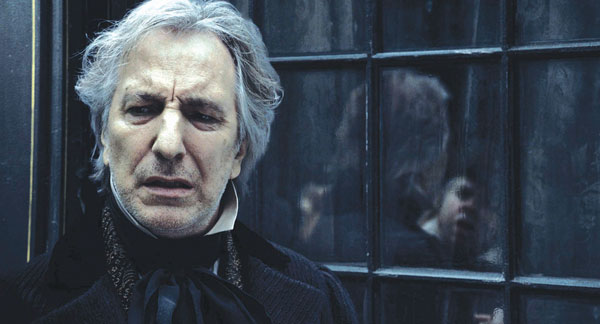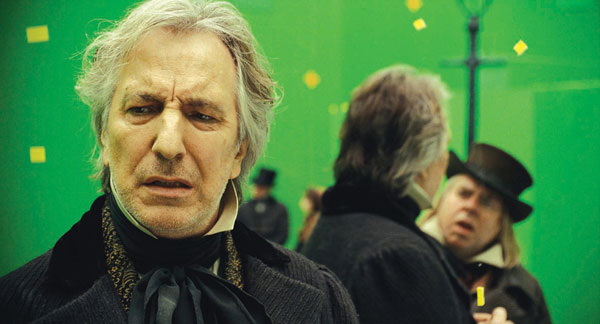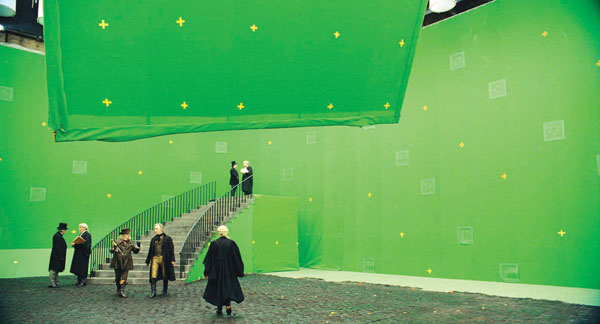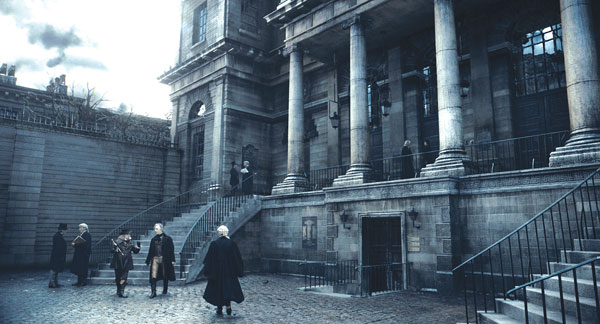| Warner Bros.’ musical-thriller earned three Oscar nominations and won the Oscar for best achievement in art direction. The movie’s vengeful protagonist Sweeney Todd is an English barber who murders his customers with a cut-throat razor and turns their remains into meat pies with the help of an accomplice, Mrs Lovett.
Gothic atmosphere
Of MPC’s 380 VFX shots on the production, shot at Pinewood Studios, around 150 used The Foundry’s Keylight and Furnace plug-ins on Shake to achieve a range of invisible effects. These included the seamless compositing of 360? CG environments with live action, classic digital set extensions, and varied fine tuning such as sky replacements.
“We use The Foundry’s tools a lot on projects such as ‘Sweeney Todd’,” says Marian Mavrovic, compositing supervisor at MPC. Remarking on Tim Burton’s typically dark, gothic atmospheres, he said the original live action was desaturated and almost monochromatic with diffused lighting. All of our VFX work had to be precise to preserve this original look. As ‘Sweeney Todd’ was shot on stage, we handled a lot of greenscreen footage and had to pull consistently clean keys to allow efficient VFX compositing. Keylight is a simple but effective tool for keying. It doesn’t take long to get the result you need.”
In the scenes of Sweeney Todd’s return up-river, only the ship’s deck, rigging and the actors, as foreground elements, were shot for real against green. Background elements – the London skyline, atmospheric skies, waters of the River Thames, small boats, London Bridge, plus smoke and fog effects – were added later with Keylight.
360-degree Environments
The film features several 360? CG environments, which MPC created and integrated into the body of the film. In one such scene, the camera tracks completely around Judge Turpin and Beadle Bamford as they walk outside The Old Bailey towards a pub, where the judge stops to look at his reflection in a window.
The foreground live action comprised solely of the actors performing on a stage floor dressed with only cobblestones and lampposts, shot against greenscreen. Every other element in the scene, including The Old Bailey, streets, the pub and the dramatic sky, was generated in CG at MPC. The shot with the Judge’s reflection employed a mirror in place of the window, also reflecting the greenscreen. The MPC team again used Keylight to achieve precise integration of the live action foreground with the 360-degree CG background. This work earned a nomination for Outstanding Created Environment in a Live Action Motion Picture from the Visual Effects Society.
“When we grade and composite greenscreen VFX shots, we like to break them down into three basic elements – the foreground, background, plus the mattes from the keys we pull,” says Mavrovic. “This gives us a lot of control during the compositing phase in making the foreground and background plates sit well together.” Separating the foreground element assists in grading out colour spill from the greenscreen and dealing with general beauty grading of the foreground plate, and Keylight helps further to remove spill from an actor’s face, clothing or props.
Hard and soft mattes
Mavrovic also finds Keylight is excellent for hair, and rates its ability to deliver soft-edge mattes on shots in which transitions between the background and foreground elements should be both smooth and detailed. “Combining hard and soft mattes can be an effective way to pull keys on more challenging shots,” he says. “Some of the plates had a narrow depth-of-field which meant that objects dropped out of focus quickly. But good quality keys allowed us to maintain this softness, and we then matched the defocus levels from the foreground to the CG background to create a seamless transition.”
To reduce noisy keys, compositors at MPC often use the DeGrain plug-in from the Foundry's Furnace collection on plates before a key gets pulled to get a cleaner result while the ReGrain plug-in reapplies grain over the results. MPC’s roto and prep department also use other Furnace tools such as WireRemoval, RigRemoval and DirtRemoval regularly to clean plates by removing wires, rigs and other unwanted objects.
|






















